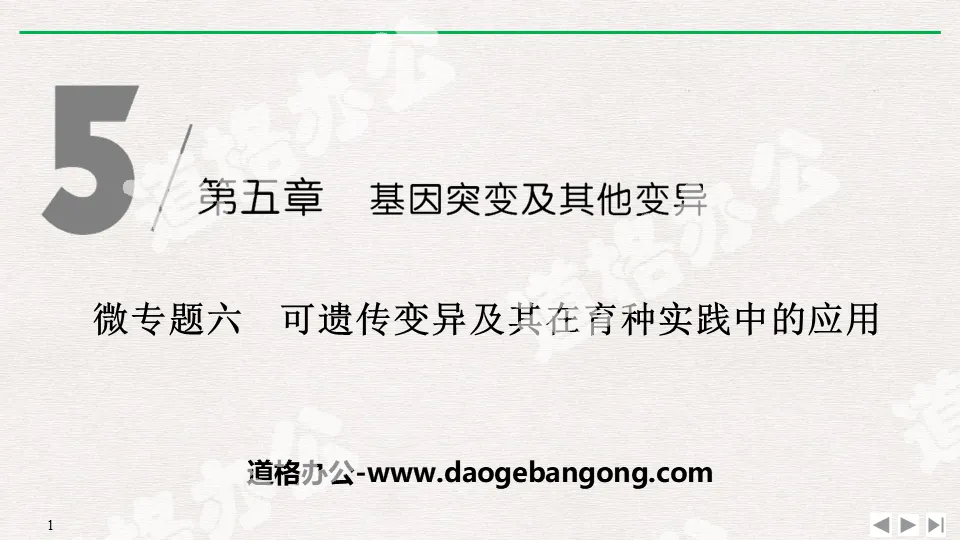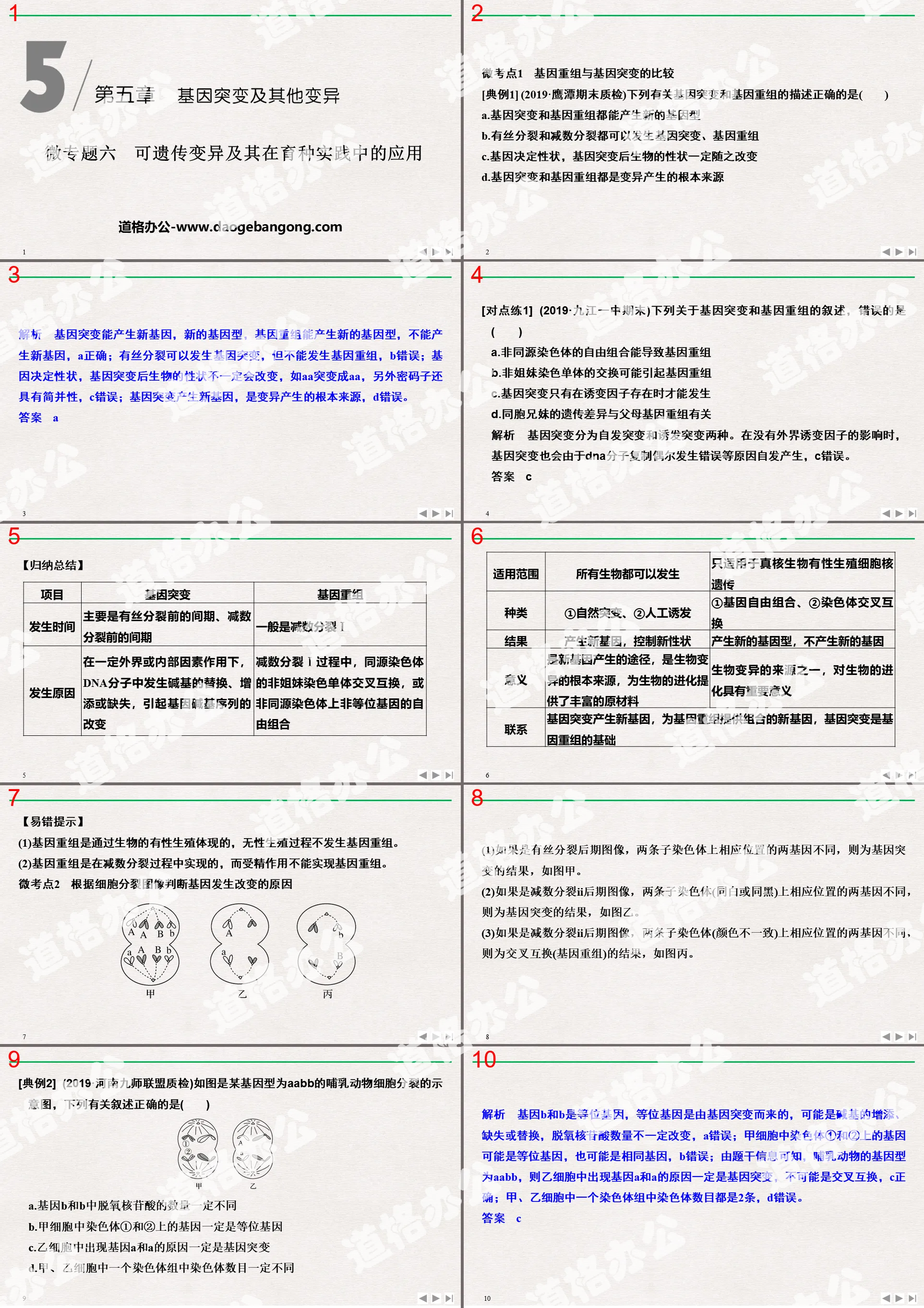People's Education Edition Biology for Grade 8, Volume 1
People's Education Edition Biology for Grade 8, Volume 2
People's Education Edition seventh grade biology volume 1
People's Education Press High School Biology Compulsory Course 2
Beijing Normal University Edition Seventh Grade Biology Volume 2
People's Education Press seventh grade biology book volume 2
Beijing Normal University Edition Eighth Grade Biology Volume 1
Beijing Normal University Edition Seventh Grade Biology Volume 1
Beijing Normal University Edition Eighth Grade Biology Volume 2
Jiangsu Education Edition Seventh Grade Biology Volume 1
High School Biology Compulsory Course 1, published by People's Education Press
Jiangsu Education Edition 8th Grade Biology Volume 1
Jiangsu Education Edition Seventh Grade Biology Volume 2
Jiangsu Education Edition 8th Grade Biology Volume 2

| Category | Format | Size |
|---|---|---|
| People's Education Press High School Biology Compulsory Course 2 | pptx | 6 MB |
Description
"Micro Topic 6 Heritable Variation and Its Application in Breeding Practice" Gene Mutation and Other Variations PPT Courseware
Part I: Comparison of genetic recombination and genetic mutation
[Typical Example 1] (2019·Yingtan Final Quality Inspection) Which of the following descriptions about gene mutation and gene recombination is correct ()
A. Both genetic mutation and genetic recombination can produce new genotypes
B. Both mitosis and meiosis can cause genetic mutations and genetic recombination.
C. Genes determine traits, and the traits of organisms will definitely change after gene mutations.
D. Gene mutation and genetic recombination are the fundamental sources of variation.
[Practice 1] (2019·Jiujiang First Intermediate End) The following statement about genetic mutation and genetic recombination is incorrect ()
A. Free combination of non-homologous chromosomes can lead to genetic recombination
B. Exchange of non-sister chromatids may cause genetic recombination
C. Gene mutations can only occur in the presence of mutagenic factors
D. The genetic differences between siblings are related to parental gene recombination
Analysis: Gene mutations are divided into two types: spontaneous mutations and induced mutations. In the absence of the influence of external mutagenic factors, gene mutations may also occur spontaneously due to occasional errors in DNA molecular replication, known as C errors.
Answer C
[Typical Example 2] (2019·Henan Ninth Division Alliance Quality Inspection) The picture below is a schematic diagram of mammalian cell division with a genotype AABb. The following relevant statements are correct ()
A. The number of deoxynucleotides in genes B and b must be different
B. The genes on chromosomes ① and ② in cells A must be alleles
C. The reason for the appearance of genes A and a in cell B must be gene mutation
D. The number of chromosomes in a chromosome group in cells A and B must be different.
[Practice 2] The picture below is a schematic diagram of cell division in a diploid animal, where the letters represent genes. Judge based on the picture ()
A. This cell contains 8 chromosomes and 8 nuclear DNA molecules
B. The somatic cell genotype of this animal must be AaBbCcDd
C. What occurred in this cell must be a dominant mutation d→D
D. This cell has undergone both genetic mutation and genetic recombination.
Heritable variation and its application in breeding practice PPT, Part 2: Comparison of genetic mutation, genetic recombination and chromosomal variation
[Typical Example 3] Which of the following statements about biological variation is incorrect ()
A. Gene mutations are random and can occur at any stage of cell division.
B. Both prokaryotes and eukaryotes can undergo genetic mutations, but only eukaryotes can undergo chromosomal mutations.
C. Chromosomal variations and gene mutations can be directly observed using optical microscopes
D. Genetic recombination occurs during sexual reproduction
Analysis: Gene mutations cannot be directly observed with a light microscope, C is wrong.
Answer C
[Practice 3] (2019·Dalian mid-term) Herbicide-sensitive soybeans obtain resistant mutants after radiation, and the sensitive gene and the resistant gene are a pair of alleles. Which of the following statements is correct ()
A. If the mutant is caused by the deletion of a segment of a chromosome, the resistance gene must be a recessive gene.
B. If the mutant is caused by the deletion of a fragment at the same position in a pair of homologous chromosomes, it can be restored to the sensitive type through further mutagenesis.
C. If the mutant is caused by a genetic mutation, it is impossible to return to the sensitive type through further mutagenesis.
D. If the resistance gene is caused by a single base pair substitution in the sensitive gene, the resistance gene must not encode a peptide chain.
Heritable variation and its application in breeding practice PPT, Part 3: Comparison of several breeding methods
(1) Several points of attention related to cross breeding
① Cross breeding does not necessarily require continuous selfing. If you select dominant pure pure breeds, you need to continuously self-cross and screen until the trait separation no longer occurs; if you select recessive pure breeds, you only need to have individuals with the trait appear in the offspring.
② Compared with hybrid breeding, mutation breeding can produce unprecedented new genes and create new types of mutations; the latter cannot produce new genes, but only recombines original genes.
③ Cross-breeding is different from hybrid vigor: Cross-breeding is to select individuals that meet the breeding goals among many types of hybrid offspring for further cultivation until a new variety with excellent traits that can be stably inherited is obtained; hybrid vigor mainly uses the excellent traits of hybrid F1 , does not require genetic stability.
[Typical Example 4] The high yield and disease resistance traits of corn are controlled by two genes, a and b respectively. These two genes are located on two pairs of homologous chromosomes. There are currently two varieties with genotypes AAbb and aaBB. In order to cultivate the superior variety aabb, the methods that can be adopted are as shown in the figure. The following analysis errors are ()
A. The breeding principles of pathways I, II, and III are genetic recombination, chromosomal variation, and gene mutation respectively.
B. When cultivating excellent varieties aabb, the most significant advantages of pathway II are not fully reflected.
C. In processes ④ and ⑤, specific chemicals can be used to treat the germinated seeds to achieve the purpose of breeding.
D. Process ③ involves in vitro culture of anthers, and processes ①, ②, and ⑥ involve hybridization or selfing.
Analysis: The methods used in Pathways I, II, and III are hybrid breeding, haploid breeding, and mutation breeding respectively. The breeding principles are genetic recombination, chromosomal variation, and gene mutation respectively. The most significant advantage of haploid breeding is to significantly shorten the breeding years, but this advantage is not fully reflected when breeding recessive homozygous individuals. Process ④ Haploid seedlings are often treated with a certain concentration of colchicine. Haploid seedlings cannot produce seeds.
Answer C
[Practice 4] It is known that watermelon (2n=22) matures early (A) and matures late (a), is dominant to thick skin (B) and thin skin (b), and has rough flesh ( C) The pair (c) is dominant, and the genes controlling the above three pairs of traits are inherited independently. There are currently three homozygous watermelon varieties A (AABBcc), B (aabbCC), and C (AAbbcc). The breeding process is shown in the figure below. Please analyze and answer the following questions:
(1) In order to obtain pure watermelons that mature early, have thin skin, and have sandy flesh, it is best to cross the varieties ________ and ________.
(2) The ________ plant in the picture (fill in the numerical sequence) can represent the seedless watermelon. The somatic cells of this plant contain ________ chromosome sets.
(3) The technical method often used to obtain ⑦ seedlings is ______________; compared with ⑧ plants, ⑩ plants are characterized by ______________, so the breeding years are significantly shortened.
(4) The ⑥ plant in the picture belongs to a new species, and its haploid ________ (fill in “fertile” or “infertile”).
Keywords: PPT courseware for high school biology compulsory course 2 from the People's Education Press is available for free download, heritable variation and its application in breeding practice PPT download, genetic mutation and other variations PPT download, .PPT format;
For more information about the PPT courseware "Gene Mutation and Other Variations, Heritable Variations and Their Application in Breeding Practice", please click on the PPT tag of "Gene Mutation and Other Variations, Heritable Variations and Their Application in Breeding Practice".
File Info
Update Time: 2024-09-20
This template belongs to biology courseware People's Education Press High School Biology Compulsory Course 2 industry PPT template
"Micro Topic 6 Heritable Variation and Its Application in Breeding Practice" Gene Mutation and Other Variations PPT Courseware Simple campus recruitment activity planning plan summary enterprise and institution recruitment publicity lecture PPT template is a general PPT template for business post competition provided by the manuscript PPT, simple campus recruitment activity planning plan summary enterprise and institution recruitment promotion Lecture PPT template, you can edit and modify the text and pictures in the source file by downloading the source file. If you want more exquisite business PPT templates, you can come to grid resource. Doug resource PPT, massive PPT template slide material download, we only make high-quality PPT templates!
Tips: If you open the template and feel that it is not suitable for all your needs, you can search for related content "Micro Topic 6 Heritable Variation and Its Application in Breeding Practice" Gene Mutation and Other Variations PPT Courseware is enough.
How to use the Windows system template
Directly decompress the file and use it with office or wps
How to use the Mac system template
Directly decompress the file and use it Office or wps can be used
Related reading
For more detailed PPT-related tutorials and font tutorials, you can view: Click to see
How to create a high-quality technological sense PPT? 4 ways to share the bottom of the box
Notice
Do not download in WeChat, Zhihu, QQ, built-in browsers, please use mobile browsers to download! If you are a mobile phone user, please download it on your computer!
1. The manuscript PPT is only for study and reference, please delete it 24 hours after downloading.
2. If the resource involves your legitimate rights and interests, delete it immediately.
3. Contact information: service@daogebangong.com
"Micro Topic 6 Heritable Variation and Its Application in Breeding Practice" Gene Mutation and Other Variations PPT Courseware, due to usage restrictions, it is only for personal study and reference use. For commercial use, please go to the relevant official website for authorization.
(Personal non-commercial use refers to the use of this font to complete the display of personal works, including but not limited to the design of personal papers, resumes, etc.)
Preview










